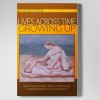Sex sells, still. Psychotic sex even better. And if you can screw psychoanalysis while reviewing a sex book, maybe improves the Amazon ratings. How’s this for an eyeball grabber:
“Slice them where you will, any collection of psychoanalysts is as mad as a parliament. Novelty beards, whirling eyes, twitches, deranged clothing, tics, jitters and habits you wouldn’t want to go into. But Wilhelm Reich (1897-1957) was the maddest of the lot”
That’s the opening to a review of “Adventures in the Orgasmatron:
Wilhelm Reich and the Invention of Sex,” by Turner.
Click Here to Read: Novelty Acts The sexual revolutions before the sexual revolution.by Ariel Levy in the New Yorkeron September 19, 2011.
Can you tolerate something unsexy by Reich? Or, how far can you read this piece on Reich’s classic, Character Analysis, if I don’t say “sex” hereafter (but will touch on psychosis at the end)?
A challenge reading Reich: one of my teachers, Al Flarsheim (analyzed by Gitelson and Winnicott in that order) said of his copy of Reich the following. Flarsheim tried to take a razor blade to his edition to “edit out” the psychotic sections from the gem of character analysis: couldn’t do it; the craziness imbricates with the genius.
I will select segments of the Character Analysis, not only for its historical value, this 1933 publication, but also to its relevance to contemporary psychoanalytic technique. There’s a challenge. Since this weekly column is brief, my hope is to catalyze rethinking character, possibly re-reading Reich, even without a razor blade poised above the page.
Freud set us on the path of character beginning with the 1908 anal character (orderly, parsimonious, obstinate), then in his brief 1916 “Some character types met with in psychoanalytic work.” This is mostly a descriptive account of “The ‘Exceptions,’” “Those Wrecked by Success,” and “Criminals from a Sense of Guilt.”
But why “character,” not “personality” Emanuel Berman asked when I told him that I was teaching a course on character at the Hebrew University. Both words arise from the Greek, although “persona” migrated through Latin. In Greek, “character” means to be etched into; there is a permanence, a consistency about it. “Persona” in Greek were the masks that actors used to portray different roles; they can be slipped off, changed with the need. That is, character is something that is etched into our bones; wherever we turn (whether we are parent, child, teacher, analyst), character (if reasonably well-formed) stays recognizable. Persona (Jung’s preferred term) we can shift like our clothes — from suit to racing shorts; from high heels to Keds; from Alexander McQueen to L.L. Bean — depending on the circumstances.
For Reich, character is even embodied in how we walk, move, present ourselves physically, wordlessly: the forthright; the despondent; the proud; the humble; the self-assured; the mousey Milquetoast. Reich watches as we enter the office, how we lay on the couch.
He suggests several characteristics of character neuroses: lack of insight (versus the neurotic symptom, which is “experienced as a foreign body”); rationalizations of the character neurosis, as it is a “way of being” (as if the person were born this way; unalterably); and the character is armored, protected, against change, such as threatened by psychoanalysis. If this sounds a bit like everyone who enters analysis, then it is an example of “mission creep” that happens with other analytic schools, which may begin with treating a specific diagnosis, then extends this technique to many more, if not all diagnosis: Kohut’s initial ideas about treating narcissistic character was extended as a general approach to many other forms of adult work by Ornstein and others.
Reich introduces us to some character types: the hysterical, the compulsive, the phallic-narcissistic the masochist. The latter, masochism, is his most detailed account. He describes vividly how the form, the manner in which someone presents material is primary in grasping character; the content can be quite secondary, even distracting. He concurs with Glover and Alexander, who distinguish the symptom neurosis from the character neurosis, then suggests that most analysis involve character neurosis: the way in which one lives in, relates to the world and oneself, not simply specific symptoms.
Reich gives detailed process material to demonstrate how he judges when to interpret, what to interpret and how he works in psychic layers. In one vignette, he lays out before us five layers coexisting simultaneously in a session, in how the patient splays out his inner life. Then, Reich explains why he doesn’t speak to the deepest layers (t/he more infantile origins), rather to what he calls the character resistance — “a form of acting or reacting” — or what we may call the lively transference of the moment. Reich then shows how the infantile material unfolds once the transference (the character resistance) is interpreted. He also candidly gives a vignette where he interpreted the infantile origins of the material before speaking to the resistance — he calls this a premature interpretation — and how this resulted in an adverse shift in the analysand’s work.
We discern here, when Reich cautions against premature interpretation — that is, speaking to the infantile origins before the character resistance — a critique of Klein’s approach. While Reich does not mention her, what he says is consistent with Glover’s (Klein’s daughter’s analyst) and Schmideberg’s (Klein’s daughter) direct attacks on Klein’s style of interpretation. Perhaps Reich’s indirection and process notes are more persuasive.
By the early 1930;’s Reich’s more psychotic biophysical” approach begins to infest his character book. He begins to lay on hands in some cases (reminiscent of Freud’s early massaging of some hysteria cases). One can read the later editions of the Character book in the way that Freud read the Schreber case: it could teach us more about the development of a delusional system in a brilliant, tragic character than about treatment.
Bruno Bettelheim, a friend of Reich’s in Vienna, told me this story. After Reich was locked away in an insane asylum shortly before his death, Bettelheim went to visit. Reich said as Bettelheim entered, “So, you want to talk about the good old times or the crazy times?” Turner has written an entertaining book. He is not entirely convincing that it was Reich who imported s-x with his zinc and steel-wool lined and orgasmatron. Character is less sexy, but closer to our everyday concerns in the office.



